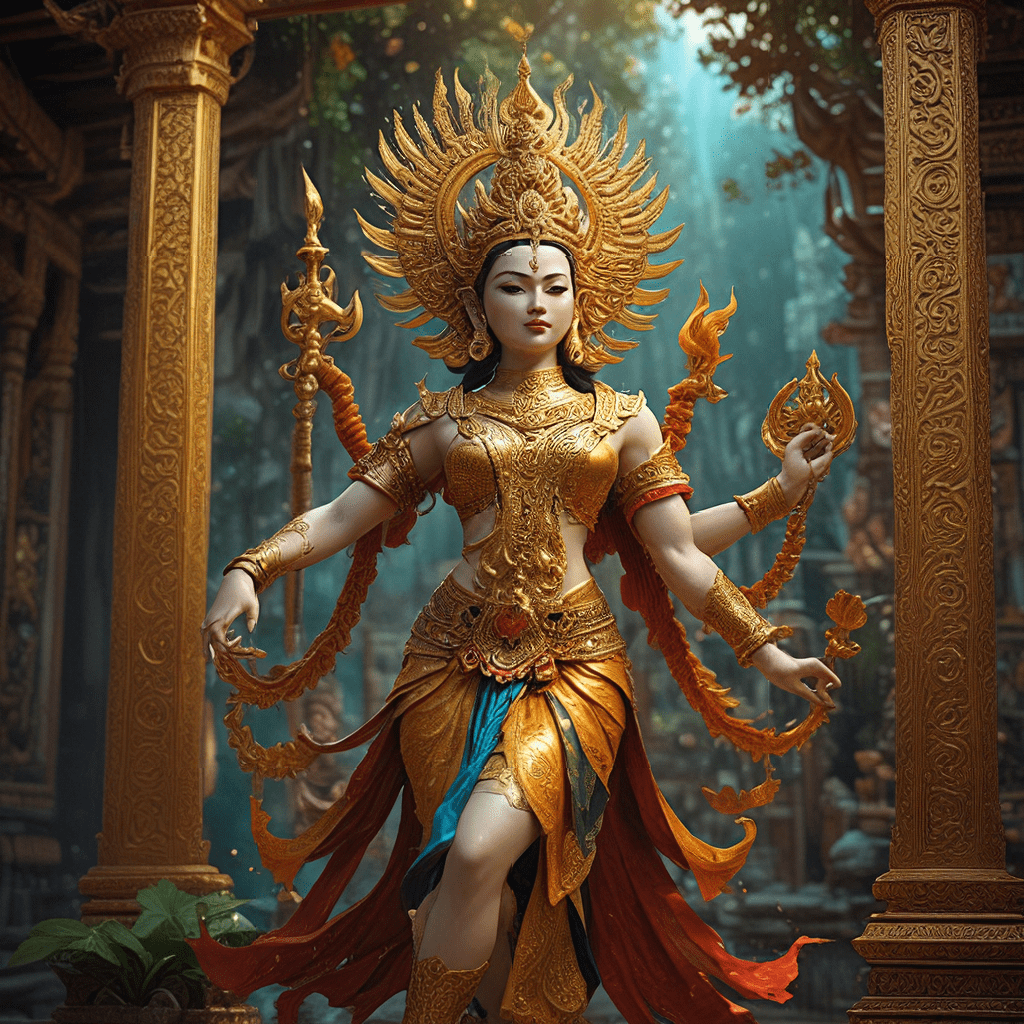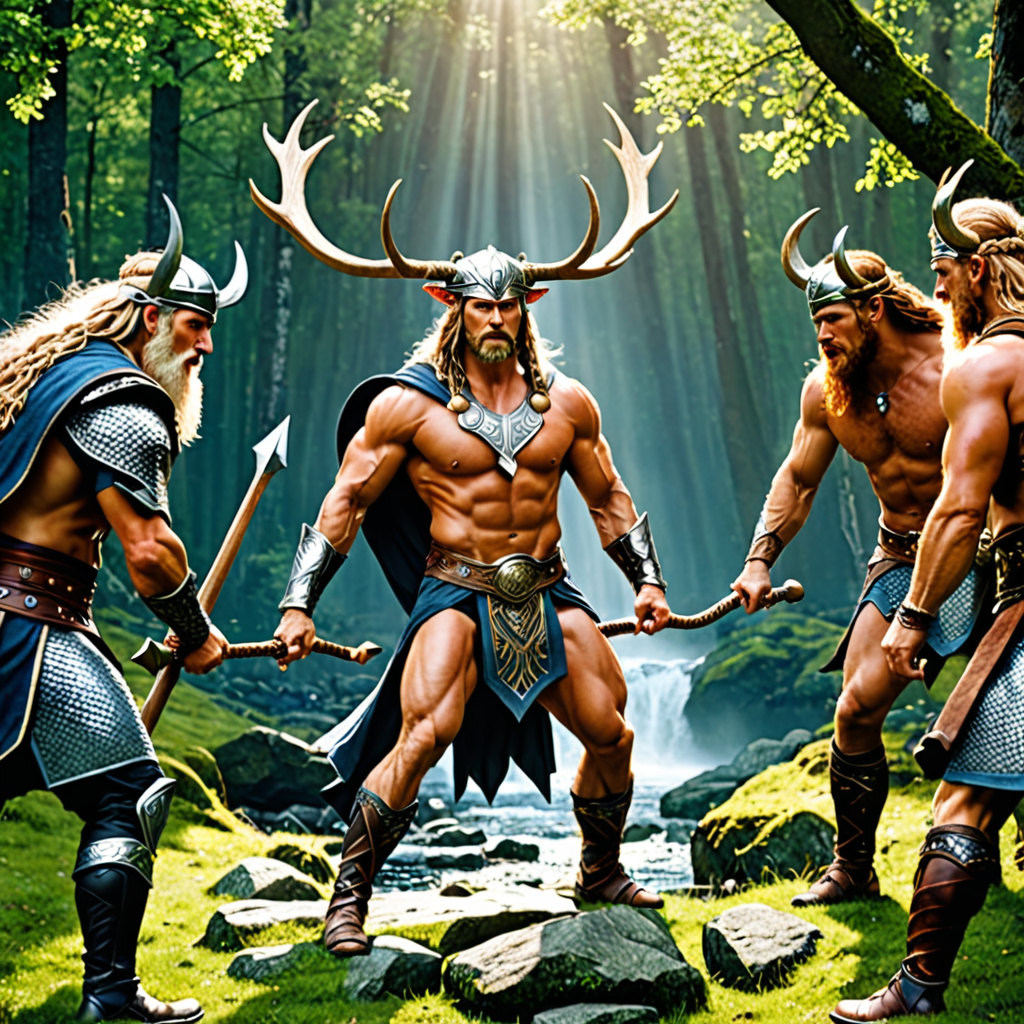Colors of the Gods: Unveiling the Secrets of Thai Mythology
Thai Mythology and Colors: A Rich Tapestry of Meaning
Thai mythology is a vibrant and captivating world filled with gods, goddesses, mythical creatures, and epic tales. Colors play a crucial role in this rich tapestry of beliefs and stories, imbuing characters, objects, and events with deep symbolic meanings. The intricate relationship between colors and mythology allows for a deeper understanding of Thai cultural values, beliefs, and rituals.
The Significance of Colors in Thai Culture
Colors hold a profound significance in Thai culture, influencing everything from clothing and architecture to art and religious practices. These vibrant hues are not merely decorative elements but act as powerful symbols that convey specific messages, emotions, and spiritual connotations. The use of color is deeply ingrained in Thai society, adding layers of meaning and richness to everyday life.
The Royal Colors: A Reflection of Power and Status
In Thailand, colors are closely associated with social hierarchy and power. The royal family, as the highest echelon of Thai society, is particularly linked to specific colors that reflect their noble status. These colors are considered auspicious and carry immense symbolic weight within the kingdom. The use of these colors in royal ceremonies and attire reinforces the power and grandeur of the monarchy, illustrating the deep connection between colors and the nation's leadership.
Gold: The Color of Royalty and Divinity
Gold is the most revered color in Thai culture, symbolizing wealth, prosperity, and divinity. It is often associated with Buddha and other revered figures, representing enlightenment, spiritual purity, and the ultimate state of being. The use of gold in temples, shrines, and royal palaces reinforces its association with the sacred and the powerful. The color gold is also seen as a symbol of good luck and fortune, making it a popular choice for special occasions and celebrations.
Red: Passion, Courage, and Sacrifice
Red, the color of passion, courage, and sacrifice, holds a significant place within Thai mythology. It is often associated with the god of war, Phra Phrom, and represents the fiery energy of battle, as well as the strength and determination needed to overcome adversity. Red also symbolizes love and devotion, making it a popular choice for weddings and other joyful occasions. However, it also carries connotations of bloodshed and sacrifice, as reflected in its use in religious ceremonies and rituals.
Blue: Serenity, Wisdom, and the Divine
Blue, the color of the sky and the ocean, is often associated with serenity, wisdom, and the divine in Thai mythology. It represents the vastness and mystery of the universe, as well as the peace and tranquility that can be found through spiritual enlightenment. Blue is also linked to the god of water, Phra Narai, who is often depicted in blue clothing. This association with water reinforces the color's connection to life, renewal, and the cycle of nature.
In Thai art and architecture, blue is frequently used to symbolize the heavens and spiritual realms. Temples and shrines are adorned with blue tiles and decorations, reflecting the belief that these sacred spaces are connected to the divine. Blue represents the journey towards enlightenment and the pursuit of spiritual knowledge, making it a powerful symbol in Thai Buddhist practices.
White: Purity, Innocence, and Mourning
White, the color of purity, innocence, and mourning, carries complex and multifaceted meanings in Thai culture. It represents the ultimate purity and spiritual cleansing, often associated with the divine and the afterlife. White is frequently used in religious ceremonies and rituals, symbolizing the renunciation of worldly desires and the pursuit of enlightenment.
However, white also holds a somber connotation, representing death and mourning in Thai society. White clothing is worn during funerals and mourning periods, signifying the loss of a loved one and the transition to the afterlife. This duality of meanings reflects the cyclical nature of life, death, and rebirth, which is deeply intertwined with Thai Buddhist beliefs.
Green: Growth, Renewal, and Prosperity
Green, the color of nature and growth, holds significant symbolism within Thai mythology. It represents life, renewal, and prosperity, mirroring the vibrant and fertile landscape of Thailand. Green is associated with the god of agriculture, Phra Mae Thorani, who is often depicted in green clothing. This link to agriculture underscores the color's connection to fertility, abundance, and the bounty of the land.
In Thai art and architecture, green is frequently used to symbolize the natural world and the cycle of life. It is often incorporated into temples, shrines, and palaces, highlighting the interconnectedness of humanity and nature. Green represents the continuous cycle of growth, renewal, and the promise of a fruitful future, making it an auspicious color in Thai society.
Black: Mystery, Darkness, and the Unknown
Black, the color of mystery, darkness, and the unknown, holds a somewhat ambivalent position in Thai mythology. While it represents the unknown and the forces of darkness, it is not necessarily viewed as inherently evil. Black often symbolizes the hidden aspects of the universe, the mysteries of existence, and the transition between life and death.
In Thai art and literature, black can be used to depict powerful figures, including deities and spirits. Black clothing is also worn by certain monks and practitioners of traditional Thai medicine, representing their connection to the unseen forces of nature. Black, while often associated with negativity, also represents the potential for transformation and the possibility of finding meaning in the face of uncertainty.
Theories on the Origin of Color Symbolism: Influences from Hinduism, Buddhism, and Local Beliefs
The rich symbolism of colors in Thai mythology is a result of a complex interplay of influences from various religious and cultural traditions. Hinduism, with its focus on deities and elaborate cosmology, has contributed significantly to the development of color symbolism in Thailand. The association of specific colors with gods and goddesses, as well as the use of color in rituals and ceremonies, stems largely from Hindu influences.
Buddhism, with its emphasis on enlightenment and the cycle of rebirth, has further enriched the meaning of colors in Thai culture. The use of white to represent purity and enlightenment, and the association of blue with wisdom and spiritual knowledge, are reflections of Buddhist beliefs.
Local beliefs and folklore have also played a role in shaping color symbolism in Thai mythology. Traditional stories and legends have often assigned specific colors to mythical creatures and spirits, reflecting local beliefs about nature, the supernatural, and the spirit world.
The combination of these diverse influences has resulted in a unique and multifaceted system of color symbolism in Thai mythology. Understanding these meanings allows for a deeper appreciation of Thai culture, beliefs, and the rich tapestry of stories that have shaped the nation's identity.
FAQ
Q: What is the significance of the Thai flag colors?
A: The Thai flag features five colors: red, white, blue, and two shades of green. Each color holds symbolic meaning. Red represents the nation, white represents purity and religion, blue represents the monarchy, and green represents the prosperity and growth of the nation.
Q: Are colors used in Thai astrology?
A: Yes, colors are significant in Thai astrology, known as "Hor Baan" or "Hor Taew." Each day of the week is associated with a specific color, which is believed to influence a person's fortune, personality, and relationships.
Q: What is the role of color in Thai Festivals?
A: Colors are essential in Thai festivals, reflecting the festive atmosphere and the specific themes of the celebration. For example, the Songkran festival, which celebrates the Thai New Year, features vibrant colors, representing the joy, renewal, and cleansing of the new year.
Q: How do colors impact Thai fashion?
A: Colors play a significant role in Thai fashion, reflecting both cultural traditions and personal styles. Traditional Thai clothing often features vibrant colors, with specific colors reserved for special occasions and ceremonies. Modern Thai fashion embraces a wide range of colors, reflecting the diverse influences and trends in Thai society.



